Drowned banknotes
Due to the recent flooding in Germany lots of banknotes have become worthless. Dutch newspaper Volkskrant has published a photo special showing the drowned banknotes.
Warning: contains shocking pictures for collectors!
Due to the recent flooding in Germany lots of banknotes have become worthless. Dutch newspaper Volkskrant has published a photo special showing the drowned banknotes.
Warning: contains shocking pictures for collectors!
Coinweek has a nice article on errors and mistakes on banknotes. Some collectors have specialized in collecting these oddities which are usually sold for high prices.
Business Insider thinks the US dollars are boring and takes a look at other currencies in their search for the world's coolest banknote. A sometimes surprising list.
Arthur L. Friedberg & Ira S. Friedberg have just issued the 20th edition of Paper Money of the United States catalog. The catalog was first published 60 years ago in 1953. An article describing this standard catalog can be found here and orders can be placed here. The catalog is available as hard cover, soft cover or as an e-book (yay!).
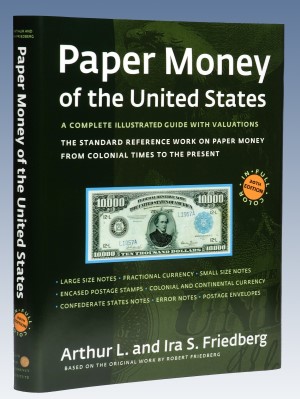
 An Australian website asks its readers if a new Australian banknote has surfaced: a $7 note with, wait for it...., a scratch-and-sniff feature with the smell of the wattle, the national scent of Australia. CSIRO, the inventors of polymer money, is neither confirming or denying that it designed a $7 banknote or that it is infused with wattle scent for security reasons.
An Australian website asks its readers if a new Australian banknote has surfaced: a $7 note with, wait for it...., a scratch-and-sniff feature with the smell of the wattle, the national scent of Australia. CSIRO, the inventors of polymer money, is neither confirming or denying that it designed a $7 banknote or that it is infused with wattle scent for security reasons.
I literally don't know where to begin... First of all, I'm pretty sure the wattle is the national flower of Australia and not the national scent. Second: are you kidding me?? A 7 dollar banknote with this design? I think the probability for this news to be true equals zero.
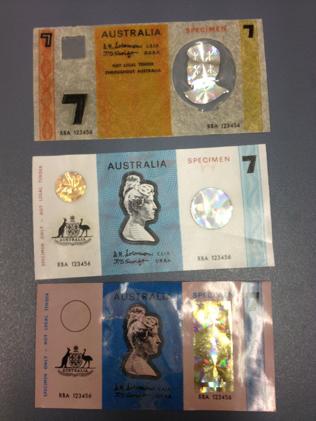
 I found an interesting article about the use of RFID chips in future banknotes. When incorporated in a banknote this technology makes it possible to track a banknote for instance via satelite. Is this a brilliant new security feature or the next step in losing even more privacy?
I found an interesting article about the use of RFID chips in future banknotes. When incorporated in a banknote this technology makes it possible to track a banknote for instance via satelite. Is this a brilliant new security feature or the next step in losing even more privacy?
Currently the European Central Bank, the Bank of Japan and researchers in Saudi Arabia are investigating if these new techniques can be implemented in future banknotes.
 The news that Sir Winston Churchill will become the new face of the British 5 pound note has been met with harsh criticism from some people. The anger is not so much directed at Churchill himself but more so at the removal of Elizabeth Fry from the note, being the only woman on a British banknote save the Queen.
The news that Sir Winston Churchill will become the new face of the British 5 pound note has been met with harsh criticism from some people. The anger is not so much directed at Churchill himself but more so at the removal of Elizabeth Fry from the note, being the only woman on a British banknote save the Queen.
The Women's Room UK has launched a Change.org petition asking the Bank of England to keep a woman on a banknote. "An all-male line-up on our banknotes sends out the damaging message that no woman has done anything important enough to appear." The petition has already gathered 17,500 signatories.
The Bank of England replied to petition by stating that the new banknote with Churchill isn't scheduled for introduction until 2016 and that a final decision still has to be made. It takes into consideration the list of public suggestions, however, which is published on its website (PDF).
So The Guardian asks its readers: which woman should be on a banknote?
 In the UK a debate is going on about what to do with the Scottish pound if Scotland would choose independence from the United Kingdom. The Guardian discusses some options: keep on using the British pound, join the Euro or issue a separate Scottish currency.
In the UK a debate is going on about what to do with the Scottish pound if Scotland would choose independence from the United Kingdom. The Guardian discusses some options: keep on using the British pound, join the Euro or issue a separate Scottish currency.
Scotland will hold a referendum on the issue for independence on 18 September 2014. See the wiki for more information.
 Al Arabiya reports: "An Arab buyer in London has paid £65,000 (almost $100,000) for a rare Palestinian banknote that was auctioned this week in the British capital. The note, which was offered by Spink Auctions on Thursday, appeared for the first time in 40 years and was on sale with another 1,690 rare notes, many of them Palestinian.
Al Arabiya reports: "An Arab buyer in London has paid £65,000 (almost $100,000) for a rare Palestinian banknote that was auctioned this week in the British capital. The note, which was offered by Spink Auctions on Thursday, appeared for the first time in 40 years and was on sale with another 1,690 rare notes, many of them Palestinian.
The notes go back to the years between 1929 and 1944, before the creation of the state of Israel. Many of the other notes were from the Gulf, some dating back to the early stage of the Saudi Arabian state and others issued from Qatar, Dubai, and Kuwait. The 100-pound Palestinian note, issued in 1929, is extremely rare and has attracted great attention at the auction, Ayman Abdou, an expert in rare banknotes said this week.
“The price which the note was sold at is not actually that expensive,” he told Al Arabiya. “At the time, this note could have bought an entire plot of land in the most beautiful parts of Palestine,” Abdou said. Abdou also said the note was particularly special because it remained in good condition, adding that its serial number is “A000000. The notes that have zeros are usually very rare. They are printed to be distributed amongst central banks across the world. This means it had been rare since the day it was issued,” he said.
Spink did not name the names of its sellers and buyers for confidentiality, and so the identity of the Arab buyer has not been revealed. Hundreds of people from the Gulf come to London every year to take part in auctions, according to the executive director of Spink, Barnaby Faull. “They are usually interested in rare objects that come from different parts of the world. People from Qatar and Dubai in particular are mainly interested rare banknotes,” he told Al Arabiya."
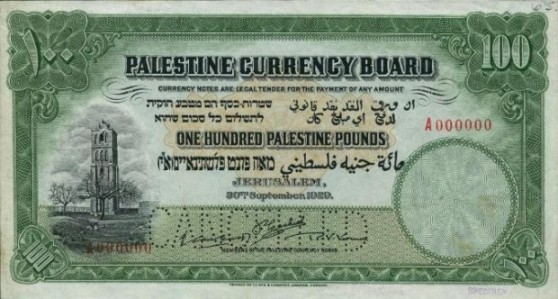
This is a story about Liang Jun, a Chinese woman of 82, who just found out she is the girl depicted on the 1 Yuan note from 1960 (P874a).
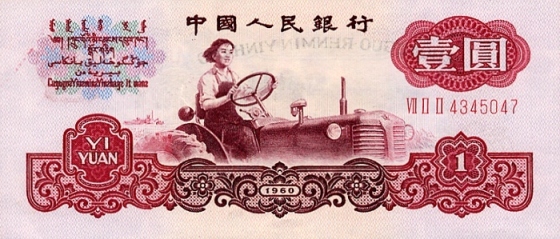
Wired reports about the problems facing the new US 100 dollar banknote and specifically the various new security features which provide all kinds of problems in production. Check out the full story here.
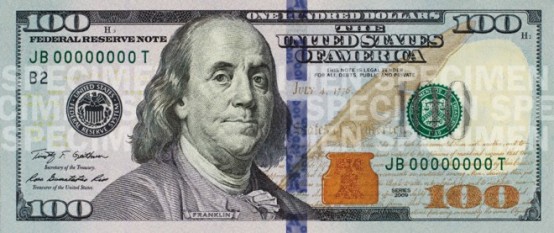
Journalist Paul English (what's in a name?) tells his funny story on trying to spend the Scottish pound banknotes in London. Some accept the notes, others don't and some people supect it's a fake. No worries people, they're genuine!
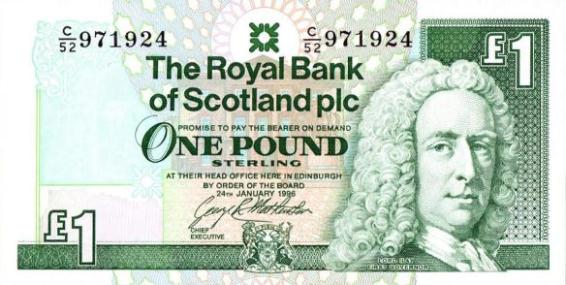
>> Wikipedia on Scottish banknotes
 Coin Update has an interesting interview with Ton Roos, Director of Banknotes at the European Central Bank. He of course talks about the forthcoming new Europa series of the euro banknotes. But he also addresses the possibility of a polymer future for the euro notes (tip: don't hold your breath for it) and the process of the new design.
Coin Update has an interesting interview with Ton Roos, Director of Banknotes at the European Central Bank. He of course talks about the forthcoming new Europa series of the euro banknotes. But he also addresses the possibility of a polymer future for the euro notes (tip: don't hold your breath for it) and the process of the new design.
The new Europa series will start with the 5 euro banknote which was revealed at the beginning of this year and which will be issued to the public on 2 May 2013.
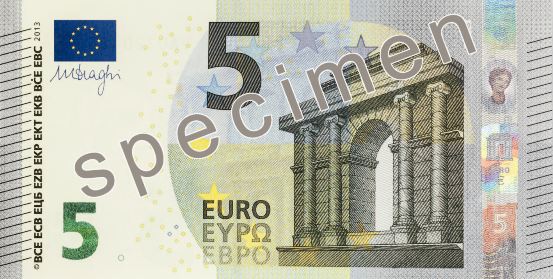
 Say what you want about the Canadians but they do know how to keep their banknotes in the news. After the flood of bad press recently, this time the news is a bit lighter. A report shows the ideas for new themes on the banknotes which have been put out to focus groups. Amongst those themes were illustrations of a gay marriage, an officer wearing a turban, and a black hockey player.
Say what you want about the Canadians but they do know how to keep their banknotes in the news. After the flood of bad press recently, this time the news is a bit lighter. A report shows the ideas for new themes on the banknotes which have been put out to focus groups. Amongst those themes were illustrations of a gay marriage, an officer wearing a turban, and a black hockey player.
The final images that were chosen are far less controversial. The $5 note will show robotic arms built for space programs and the $10 note a train. The $20 note depicts the Vimy Ridge memorial in France, while the $50 has a picture of an icebreaker. The Queen and prime ministers occupy the fronts of the notes.
An early version of the $100 note, illustrating the theme of medical innovations, showed a female medical researcher with distinctly Asian features. But later focus groups raised questions about her ethnicity, prompting the bank to erase the Asian features in favour of a Caucasian-looking woman.
Apparently a lot of things are controversial, looking at a list of rejected ideas which has been published nonetheless:
This has caused some people to argue against the focus groups altogether. Not such a bad idea I think.
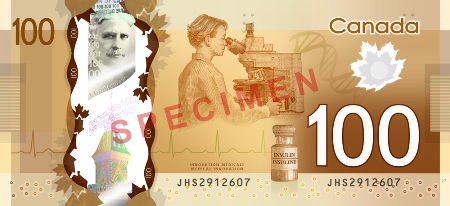
 Hip hip hooray for banknote printer De La Rue. The biggest banknote printer of the world celebrated its 200th birthday yesterday. It was founded by Thomas de la Rue in Guernsey on 6 February 1813.
Hip hip hooray for banknote printer De La Rue. The biggest banknote printer of the world celebrated its 200th birthday yesterday. It was founded by Thomas de la Rue in Guernsey on 6 February 1813.
Back in 1831 it registered the ace of spades playing card produced using a revolutionary new typographical process ensuring uniformity in card manufacturing. It was subsequently granted a royal patent by William IV to print playing cards that had previously been produced by hand using stencils. In 1840 De La Rue produced its first adhesive postage stamp and in 1846 registered its patent for the first envelope folding machine. De La Rue secured its first contract to print banknotes with the Bank of Mauritius in 1860 for the Mauritius 10 shilling, £1 and £5 notes. A contract which is still active today after 150 years. In 1914, De La Rue was commissioned to produce the £1 and one shilling notes for the Bank of England: the start of another important collaboration with the Bank that continues today.
In recent years the Group has been involved in the design or production of over 150 national currencies and a wide range of security documents. In early 2011 De La Rue designed and printed currency for South Sudan, the world’s newest country, ahead of its independence later that year.